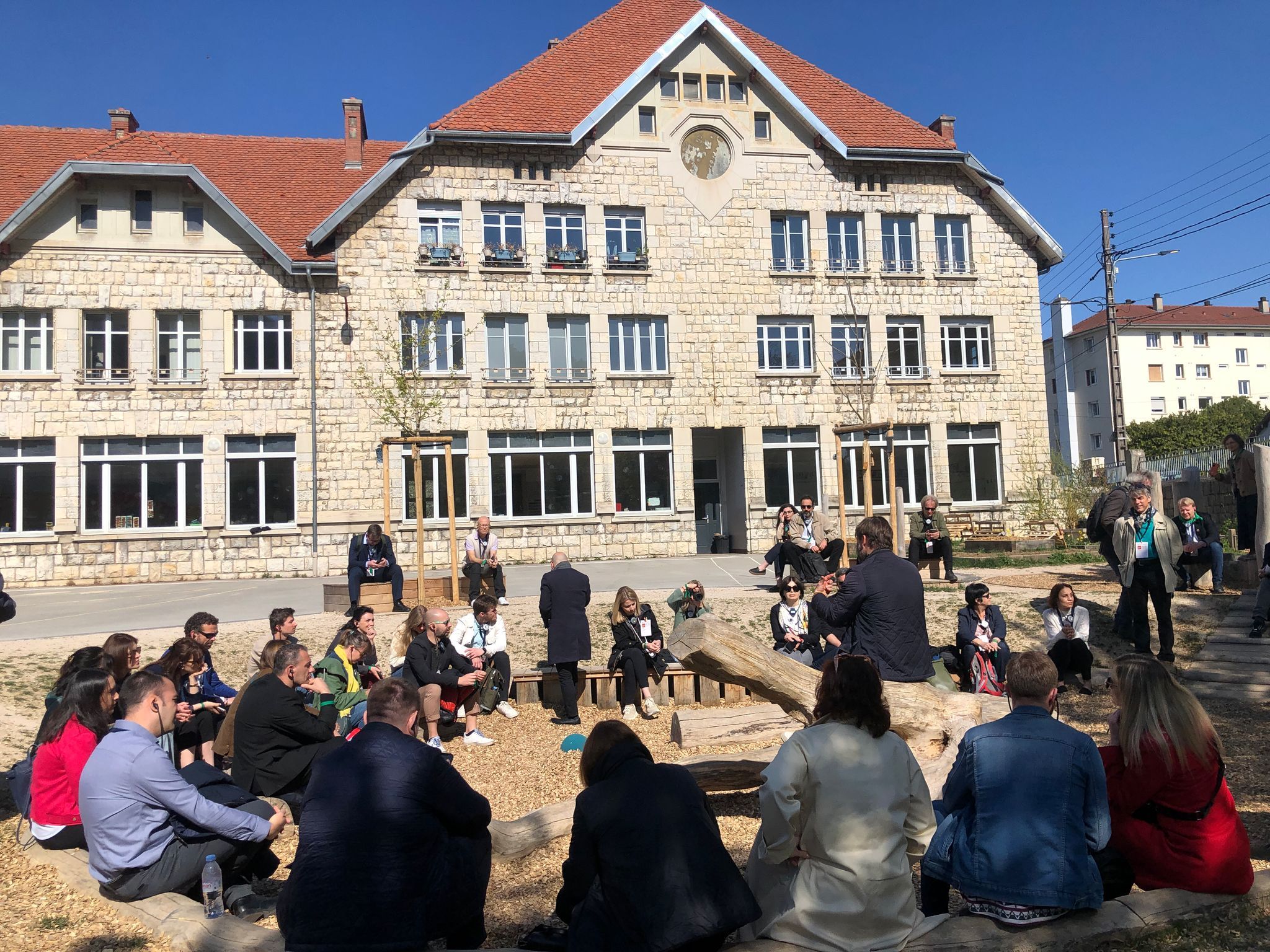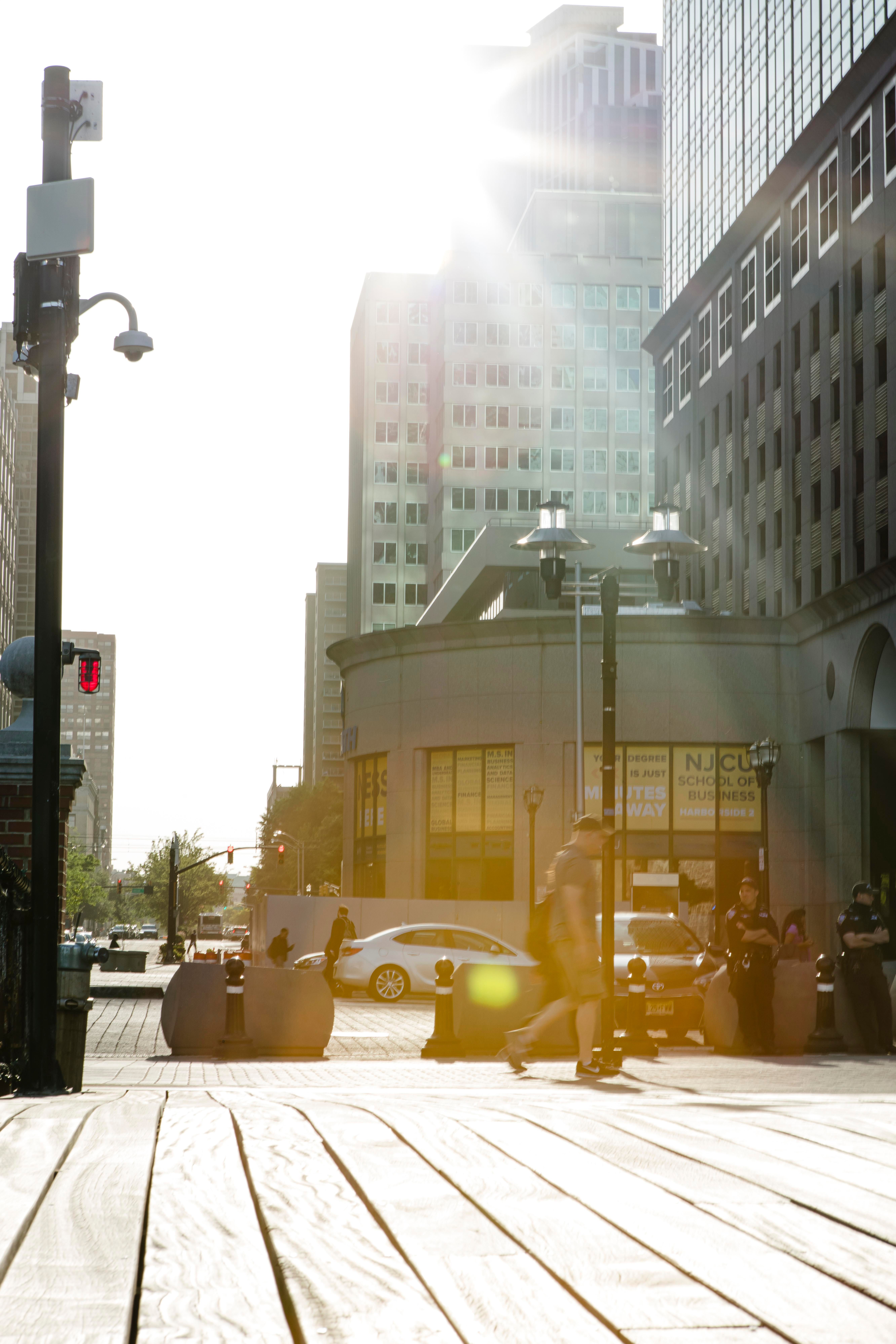Climate change is having an increasing impact on urban life: heatwaves, heavy rains, and flooding are the new reality cities face worldwide. At the same time, this challenge is a strong incentive to act — cities are implementing new spatial, social, and strategic solutions that improve quality of life and protect residents. At the Energy Cities Forum, representatives of municipalities shared their experiences of adapting to these new challenges. We’re sharing four inspiring European examples that may spark ideas for local transformation.
Infrastructure solutions: how to cool the city
In Besançon, France, the local government faced the problem of overheating in public squares — asphalt in the city center reached up to 60 °C. To reduce this heat stress, the square was redesigned: trees were planted, permeable materials were used for surfaces, and shaded seating areas were introduced. In addition, the city began transforming schoolyards into green spaces using natural materials, actively involving students. These interventions not only help reduce temperatures but also shape environmental awareness among children.

Strategy-level adaptation
The Spanish city of Viladecans implements its climate policy through a simple yet effective formula: 3-30-300. According to this strategy, every resident should be able to see at least 3 trees from their window, live in a neighborhood with at least 30% tree canopy, and be no more than 300 meters from the nearest green space.
During heatwaves, the city activates a network of “cool spaces” — libraries, cultural centers, and administrative buildings where vulnerable groups can seek refuge. These spaces are specially marked in the city to ensure they are easy to locate.
Community engagement for urban resilience
In Clermont-Ferrand, a platform called the Alliance for Transformation was created — a partnership between the public sector, citizens, and businesses that mobilizes during extreme heat events. The alliance organizes cooling shelters, coordinates volunteers, creates shaded zones, and addresses the needs of older people and other vulnerable groups.
City officials emphasize that climate adaptation should be part of a social contract, not just a technical fix.
In Marseille, the Cool Noons initiative introduced a network of “cooling routes” — shaded pedestrian paths integrated with fountains and greenery. These routes were co-designed through workshops with residents and civic organizations and are now incorporated into the city’s planning strategy. An interactive map of “cool zones” was also created so residents can easily find relief during hot weather.

Lviv: adapting through the Urban Workshop
In Lviv, an example of climate adaptation is the Urban Workshop initiative. Working with residents, the city implements ideas for greening residential areas, creating micro-gardens, and setting up resting areas with shade and water. These solutions help neighborhoods better withstand heat, improve urban comfort, and encourage shared responsibility for the environment.
A common goal for different paths
Cities adapt in different ways: some through large-scale strategies, others through infrastructure improvements or collaboration with local communities. But all of these approaches share a single goal — to create spaces where life is comfortable, safe, and resilient. Each step, whether large or small, brings us closer to building cities that can better withstand the impacts of a changing climate.
